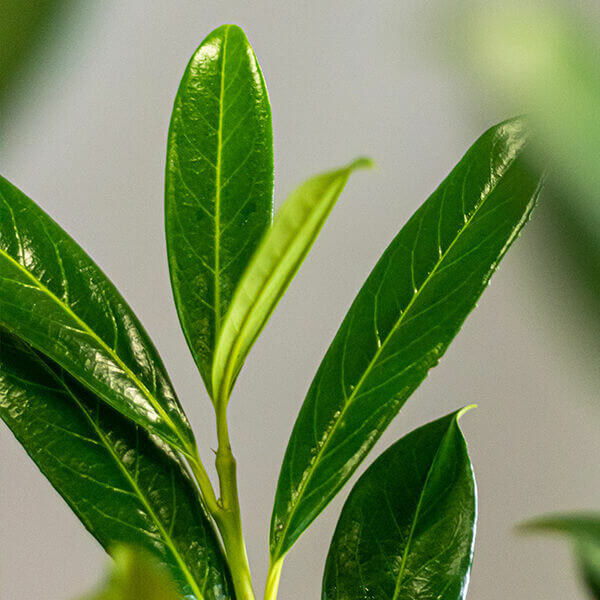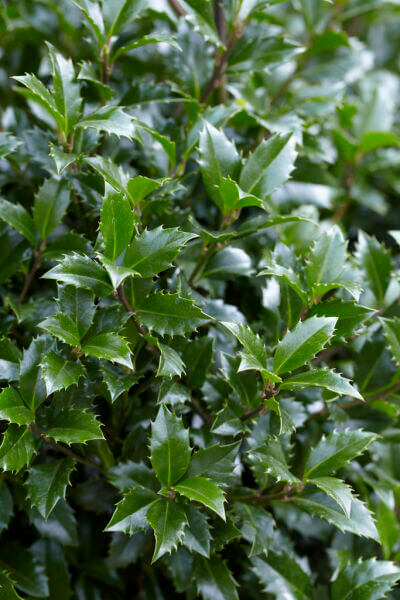Best Hedging Plants For Spring Interest
Best Hedging Plants For Spring Interest
Blog Article
Best Hedging Plants For Garden Rooms
Enhance your garden's appeal with rich hedge varieties such as Yew (Taxus), Thuja, Laurel, Photinia, and Bamboo, celebrated for their structural stability and environmental advantages.
Yew and Thuja offer evergreen coverage and winter resilience, while Laurel uses rapid growth and broad, aromatic leaves.
Photinia adds seasonal appeal with its dynamic red foliage, and Bamboo provides a low-maintenance, peaceful atmosphere.
These hedges improve air quality, lower sound, and create tranquil, personal spaces.
Proper planting, spacing, and maintenance make sure vigorous growth and eco-friendly consistency.
Explore how these rich ranges can raise your garden's beauty and well-being.
Secret Takeaways
Change Your Garden With Lush Hedge Varieties
- Select Yew for its thick, evergreen development and unparalleled longevity.
- Select Laurel for its quick development and broad leaves, ensuring fast privacy.
- Choose Photinia for its dynamic seasonal foliage, which turns a striking dark red.
- Make use of Bamboo for a low-maintenance, winter-hardy hedge with aesthetic appeal.
- Space plants 2-3 per meter and prune routinely for ideal development and health.
Popular Hedge Plants
When changing a garden with lavish hedge varieties, it's necessary to consider popular hedge plants such as Yew, Thuja, Laurel, and Photinia due to their unique characteristics and benefits.
Yew (Taxus) is extremely respected for its durability and thick, green development, making it a prime option for enduring landscapes.
Thuja is noted for its evergreen foliage and robust winter durability.
Photinia includes seasonal vibrancy with red leaves that darken gradually, creating dynamic visual appeal.
Laurel offers rapid growth and fragrant, broad leaves, perfect for fast personal privacy.
Furthermore, Bamboo is an exceptional option for atmosphere, using a low-maintenance, winter-hardy choice that improves the garden's visual with its classy, swaying walking canes.
These choices accommodate a variety of horticultural needs and choices.
Advantages of Garden Hedges
Garden hedges offer a wide range of benefits, making them an important addition to any landscape. These natural barriers are cost-efficient to carry out and supply substantial wind security, enhancing air flow and contributing to sound reduction. The thick foliage of hedges like Thuja and Beech makes sure personal privacy by obstructing presence, producing a serene and remote environment.
Hedges likewise play a vital role in microclimate guideline, supplying a stable environment that fosters plant development and reduces temperature level changes. Their intricate leaf structures filter contaminants, improving air quality and adding to a much healthier garden environment.
Additionally, hedges stand out in noise reduction, taking in and deflecting sound waves to lower ambient sound levels. This dual performance of providing both acoustic and visual personal privacy enhances the general harmony and aesthetic appeal of any garden.
Planting and Upkeep Tips
For a successful hedge, careful preparation of the planting area is important. Make sure the soil has correct pH and drainage to support strong root advancement.
Area the plants appropriately for the picked species. Water the hedge often throughout its initial development stage, adjusting as needed with seasonal modifications.
Carry out a systematic insect control and illness avoidance strategy, using chemical or organic treatments when required. Routinely check for aphids, mites, and fungal infections.
Apply mulch to retain moisture and reduce weeds. Seasonal pruning promotes dense development and air blood circulation, vital for plant health.
Following these guidelines will assist you cultivate a lively, well-maintained hedge that enhances the beauty of your garden.
Spacing and Trimming Guidelines
Spacing and Trimming Guidelines
Appropriate spacing and trimming are important for cultivating healthy, visually appealing hedges. Adequate spacing ensures each plant receives sufficient nutrients, light, and airflow.
Follow these standards for optimum hedge upkeep:
- Spacing: Position hedge plants 2-3 plants per meter to motivate robust development.
- Pruning Methods: Routine pruning is important for maintaining desired hedge height and shape. Trim new development in summertime and cut down older wood throughout winter season.
- Seasonal Care: Adjust trimming schedules and approaches according to seasonal requirements to ensure plant health.
- Hedge Height: Routinely display and cut to keep the desired hedge height and achieve uniform aesthetic appeals.
Complying with these steps will ensure your hedge grows, boosting both the appeal and functionality of your garden.
Choosing the Right Hedge
Picking the Right Hedge
Picking the suitable hedge involves evaluating aspects such as fully grown height, foliage density, and ecological resilience. Effective hedge plant choice requires understanding each types' development qualities and site-specific adaptability.
For instance, Yew (Taxus) provides excellent durability and dense development, while Thuja is notable for its winter season durability. In addition, considering upkeep requirements is important; fast-growing types like Laurel or Privet demand routine trimming, whereas low-maintenance alternatives like Bamboo or Ivy might be more effective for those looking for very little maintenance.
Ecological elements such as soil type, light accessibility, and wetness conditions ought to likewise direct the choice process. This mindful approach makes sure the chosen hedges will prosper, supplying both practical and aesthetic advantages to the garden landscape.
Shipment and Planting Guidance
To guarantee your hedge plants thrive, they ought to be provided by specialized carriers and planted quickly upon arrival.
Follow these vital actions for successful planting:
- Soil Preparation: Improve the soil with raw material to improve drainage and nutrient material.
- Planting Depth: Produce a trench two times the width and equal to the depth of the root ball.
- Watering Techniques: Water thoroughly after planting, keeping the soil regularly wet but not saturated.
- Mulching: Apply a layer of mulch to keep wetness and reduce weeds.
Consumer Assistance and Service
Given the essential role of timely assistance in horticultural pursuits, our consumer support group is readily available 6 days a week through telephone, e-mail, and social networks to use skilled advice and swiftly deal with any concerns. Their commitment to fast reaction times guarantees consumer complete satisfaction by solving questions related to plant health, optimal planting methods, and maintenance schedules.

Response Time
----------------------
Telephone
6 days a week
Within 24 hr
This thorough assistance system, enhanced by a stellar 9.3/ 10 client ranking, highlights our dedication to boosting the gardening experience for every client.
Frequently Asked Questions
For How Long Does It Take for Hedge Plants to Establish?
Hedge plants normally need one to three years to become completely established, with the precise duration varying by species and growing conditions.
Reliable care throughout this vital duration is important for robust growth. Consistent watering, watchful weed control, and appropriate fertilizer application are essential in promoting strong root advancement.
For example, fast-growing species like Laurel might establish faster, while slower-growing varieties such as Yew might take longer. Thorough maintenance speeds up the establishment process, leading to dense and healthy hedges.
What Are the Finest Hedge Plants for Privacy?
The concern of the very best hedge plants for personal privacy involves evaluating evergreen and deciduous choices.
Evergreen hedges like Thuja, Laurel, and Cypress supply year-round protection, guaranteeing continuous privacy.
In contrast, deciduous hedges such as Beech offer seasonal privacy, shedding leaves in cooler months.
Secret maintenance tips for personal privacy hedges consist of regular trimming, fertilizing in spring, and correct spacing-- usually 2 to 3 plants per meter.
Additionally, constant watering and thorough weed removal are crucial for promoting healthy, thick growth.
Can Hedge Plants Bring In Wildlife to My Garden?
Yes, hedge plants can attract wildlife to your garden by supplying essential advantages like shelter, food, and nesting websites, thereby boosting local biodiversity. Yew, holly, and laurel are exceptional for bring in birds, while ivy supports a range of insects.
However, it is very important to keep in mind that there are some disadvantages, such as increased upkeep to manage bugs and regular maintenance. Thoroughly choosing and preserving hedge ranges can help stabilize these benefits and disadvantages, ultimately fostering a vibrant and sustainable ecosystem in your garden.
Exist Any Blooming Hedge Plants Available?
Yes, there are flowering hedge plants available that can improve the appeal of your garden.
For example, Elaeagnus, also called Olive Willow, produces aromatic white flowers in the fall, adding a touch of sophistication.
Photinia, another popular choice, showcases lively red leaves that develop into an abundant green, creating a dynamic visual impact throughout the seasons.
To make sure these plants grow, it's important to practice appropriate pruning strategies and seasonal maintenance, such as trimming new development in the summer season and cutting down in the winter season.
These procedures will assist preserve the health and visual appeal of your blooming hedges.
How Do I Avoid Bugs in My Hedge Plants?
To avoid bugs in hedge plants, employ natural pest control methods and maintain proper hedge care. Present helpful pests like ladybugs, which take advantage of damaging bugs, to develop a well balanced environment.
Frequently hedge plants examine your hedges for signs of infestation and immediately eliminate any affected parts to avoid the spread. Make sure the health of your hedges by using well balanced fertilizers and providing adequate water.
Utilize mulching to maintain soil wetness and correct spacing to minimize plant tension and promote robust growth. These practices collectively help in minimizing pest concerns and keeping a healthy hedge.
Conclusion
In essence, selecting the best hedge varieties such as Yew, Thuja, and Laurel can transform any garden into a serene sanctuary. These plants offer year-round greenery, enhance visual appeal, and offer practical advantages like noise reduction and wind defense.
Appropriate planting techniques, precise spacing, constant watering, and seasonal trimming are essential for ideal growth.
Trustworthy delivery services and expert consumer support ensure a smooth experience from purchase to planting, making it simpler than ever to raise your outdoor area.
Garden hedges provide a multitude of advantages, making them a valuable addition to any landscape. These natural barriers are cost-efficient to execute and supply considerable wind protection, improving air circulation and contributing to sound decrease. The dense foliage of hedges like Thuja and Beech makes sure privacy by blocking visibility, producing a remote and serene environment.

Pruning Methods: Regular pruning is essential for keeping wanted hedge height and shape. Trim new development in summertime and cut back older wood during winter season.
Report this page